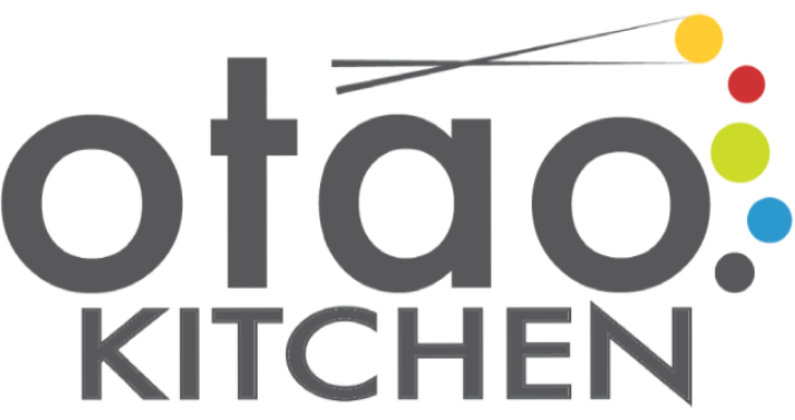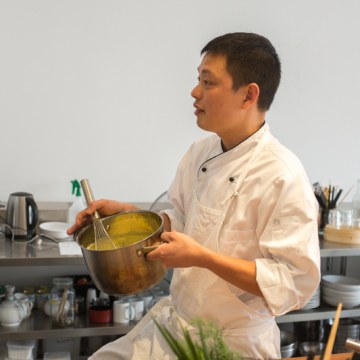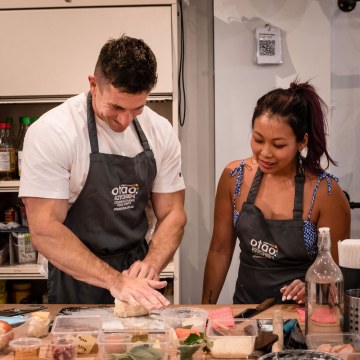Vietnamese Culinary Landscape
Embarking on a culinary journey through Vietnam is akin to exploring a vivid tapestry of flavors and traditions. Each region in Vietnam offers a distinctive food culture reflective of its geography, history, and local customs. From the fragrant street food stands of Ho Chi Minh City to the tranquil countryside of the Mekong Delta, Vietnamese cuisine provides a rich and diverse eating experience unmatched anywhere else. The essential trifecta of flavor—sweet, sour, and salty—is evident across various traditional dishes, accentuated with aromatic herbs and ubiquitous condiments like fish sauce and shrimp paste. As you travel through Vietnam, you'll encounter iconic Vietnamese food staples such as rice noodles, spring rolls, and the ever-popular Banh Mi. This overview presents a brief introduction to Northern, Central, and Southern Vietnam's unique culinary landscapes.
Northern Vietnam
Northern Vietnam, with its cooler climate and rich history, tends toward subtler, intricate flavors in its cuisine. The region emphasizes balanced seasoning, preferring light touches of seasoning over bold and overpowering spices. Hanoi, the capital city, is the birthplace of iconic Vietnamese dishes like Pho and Bun Cha. These noodle-based dishes are crafted with simplicity, allowing the freshness of raw ingredients to shine. In the North, dipping sauces made with fish sauce and wood ear mushrooms add depth to flavors without overwhelming the natural elements of each dish. Street food vendors play a crucial role in the Northern culinary scene, where locals and tourists alike can experience traditional and contemporary Vietnamese food.
Central Vietnam
Central Vietnam is renowned for its bold, spicy flavors, heavily influenced by its ancient imperial history. This mountainous and coastal region offers a diverse culinary palette that often includes vibrant elements not found elsewhere in the country. Hue, once the imperial capital, exhibits a regal cuisine where intricately prepared dishes like Banh Xeo—a crispy, savory pancake filled with shrimp and pork—mirror the grandeur of bygone eras. Meanwhile, Hoi An entices food lovers with its unique dish, Cao Lau, a hearty noodle dish said to reflect the region's multicultural heritage. The robust use of chili and spices in Central Vietnamese food provides a fiery contrast to the region’s often temperate climate, delivering an unforgettable culinary experience.
Southern Vietnam
Characterized by its openness to innovation and a mélange of flavors, Southern Vietnam embraces a sweeter palate and heavier use of fresh herbs than its northern counterparts. The bustling streets of Ho Chi Minh City, with their cosmopolitan vibes, are packed with street food vendors offering everything from Bánh Mì Phuong—a celebrated variation of the baguette sandwich—to succulent Gỏi cuốn or fresh spring rolls. The Southern region also capitalizes on its rich agricultural landscape, where the Mekong Delta produces an abundance of fruit and vegetables that permeate local dishes. Dipping sauces and coconut milk often feature prominently in Southern Vietnamese cooking, offering a creamy, sweet contrast to the lighter, tangy flavors found elsewhere in Vietnam. Whether you're wandering through vivid night markets or attending cooking schools in the city, Southern Vietnam ensures a delicious exploration of taste.
Must-Try Dishes Across Vietnam
Vietnam is a culinary haven for food lovers, offering a vast array of flavors and textures. From bustling street food markets to refined dining experiences, Vietnamese cuisine provides an exploration of both taste and culture. The following sections will guide you through some must-try dishes across Vietnam, revealing the iconic national dishes that define the country's culinary identity, along with regional specialties that showcase the diverse flavors found from Ho Chi Minh City to Hoi An.
Iconic National Dishes
Vietnam's iconic national dishes are the backbone of its culinary reputation. At the heart of Vietnamese cuisine is the humble Banh Mi, a delicious bread roll filled with a variety of meats, pickled vegetables, and herbs. Different regions put their spin on this staple, but the quintessential version can be found throughout the country, each bite offering a harmony of textures and flavors.
Rice noodles also play a crucial role in Vietnamese dishes, with Pho being one of the most famous. This aromatic broth-based noodle soup, often infused with beef or chicken, is a daily staple for many locals and a must-try for visitors. The balance of spices, herbs, and its savory broth makes it a comforting meal that can be enjoyed at any time of the day.
Another national treasure is Goi Cuon, or Vietnamese spring rolls. These rice paper rolls are filled with shrimp, pork, and fresh greens, often accompanied by a delicious dipping sauce made from fish sauce, garlic, and chilies. These refreshing rolls are perfect for a light meal or appetizer, showcasing the fresh ingredients typical in Vietnamese cooking.
Regional Specialties
Vietnam's rich culinary landscape is vividly illuminated through its regional specialties. Each area brings a unique flair to Vietnamese cuisine, reflecting historical, cultural, and geographical influences. In the bustling streets of Hanoi, Bun Cha is a beloved dish that captures the essence of Northern flavors. Grilled pork patties served with vermicelli noodles, fresh herbs, and a tangy dipping sauce, Bun Cha is a delightful midday meal enjoyed by both locals and travelers.
Moving south to the historic town of Hoi An, you'll discover Cao Lau, a dish unique to the region. With its chewy noodles, tender slices of pork, crispy croutons, and fresh greens, caressed by a sauce flavored with local herbs and spices, it reflects a crossroad of influences from various cultures that once traded in this bustling port city.
In the Mekong Delta, Banh Xeo captures the vibrant character of Southern Vietnamese cooking. These crispy, rice-flour crepes are filled with pork, shrimp, and bean sprouts, then wrapped in leafy greens before being dipped in a savory fish sauce. This tantalizing dish is typically enjoyed by hand, reflecting the communal nature and warm hospitality of the Vietnamese people.
Whether you are wandering through the coastal city of Nha Trang known for its fresh seafood or exploring the vibrant food scene in Ho Chi Minh City, Vietnamese dishes offer spectacular insights into the culture. Embracing both the national treasures and diverse regional specialties will ensure a rich and unforgettable culinary journey across Vietnam.
Vietnamese Street Food Culture
Vietnamese street food culture is a vibrant tapestry that beautifully reflects the nation's history, geography, and diverse culinary influences. It’s a fascinating blend of taste, aroma, and bustling activity. Street food in Vietnam isn't just about satisfying hunger; it’s a social experience that engages all the senses. From the savory delights of Banh Xeo to the invigorating aroma of Vietnamese coffee, each dish tells a story of tradition and innovation. These street-side culinary adventures are eagerly embraced by both locals and food lovers visiting from afar. With vibrant food stalls on every corner, it's no wonder that street food is an integral part of the daily life in cities like Ho Chi Minh City and Hoi An.
Popular street markets
Exploring the popular street markets of Vietnam is an essential part of immersing oneself in the local food scene. These markets are bustling hubs of activity, filled with the sights and sounds of vendors preparing traditional Vietnamese dishes. In Ho Chi Minh City, the Ben Thanh Market is a must-visit. It offers a wide array of local delicacies, from savory Banh Mi to aromatic Pho. Visitors can also find a remarkable collection of spices and fresh produce that reflect Vietnam's rich agricultural bounty.
In the quaint town of Hoi An, the Central Market is another treasure trove for culinary enthusiasts. Here, food lovers can indulge in dishes like Cao Lau, a regional specialty featuring rice noodles and pork. Wandering through these markets, visitors can interact with street food vendors, immerse themselves in the vibrant atmosphere, and discover the authentic flavors that define Vietnamese cuisine.
Etiquette of street-side dining
Street-side dining is a distinctive element of the Vietnamese food experience, offering not only an opportunity to enjoy delicious dishes but also to observe local customs. When engaging in street-side dining, it is important to understand certain etiquette practices that make the experience more enjoyable. One key aspect is showing respect to the street food vendors by greeting them with a smile or a polite nod, which acknowledges their skill and hospitality.
Another consideration is the use of dipping sauces, such as fish sauce or shrimp paste, which are often provided with meals. These condiments enhance the flavors of dishes like Goi Cuon and Banh Xeo. Diners are encouraged to try these sauces, but should always use a separate small plate or bowl for dipping to maintain hygiene. Sharing tables with strangers is common and accepted, so diners should be open to interacting with others, facilitating a sense of community that is emblematic of Vietnamese street-side dining.
Essential street food experiences
Experiencing the street food of Vietnam is akin to embarking on a gastronomic adventure through its cities and towns. Ho Chi Minh City offers an abundance of options for those seeking quintessential Vietnamese dishes. Here, one can savor the mouthwatering Bun Cha, a dish of grilled pork served with rice noodles, fresh herbs, and dipping sauces. The streets of Hanoi provide a similar treat with their iconic Pho, a fragrant noodle soup that captures the essence of Vietnamese culinary craftsmanship.
In Hoi An, food enthusiasts shouldn't miss Cao Lau, which features dense noodles bathed in a savory broth and garnished with wood ear mushrooms and sliced pork. The vibrant culinary scene extends to places like the Mekong Delta, where Bánh Mì offers a taste of local bread rolls filled with diverse ingredients. For those with a sweet tooth, Vietnamese desserts like Che, a mixed sweet soup, serve as the perfect ending to a street food journey. Each region adds its unique flair to the national food palette, ensuring that the street food experiences in Vietnam are as diverse as they are unforgettable.
The Role of Coffee in Vietnamese Cuisine
Vietnamese cuisine is renowned for its aromatic dishes, but the role of coffee in this vibrant culture is equally captivating. Coffee in Vietnam isn't just a beverage; it forms an integral aspect of the culinary landscape, harmonizing with the country's diverse food experiences. The Vietnamese have embraced coffee as part of their daily routine and social gatherings, making it an essential complement to the bustling street food scene and traditional meals. This integration of coffee into daily life reflects both an appreciation for rich flavors and a testament to cultural evolution influenced by historical trade routes.
Traditional Vietnamese Coffee
Traditional Vietnamese coffee is crafted with care and reflects a unique brewing technique that sets it apart. Predominantly, a small metal drip filter known as a 'phin' is used to create strong, dark coffee. This process results in a robust, aromatic cup that serves as a daily staple for many. Often, a touch of sweetened condensed milk is added, creating 'Cà Phê Sữa Đá,' a creamy iced delight that perfectly balances strong coffee notes with sweetness. The preparation of this beverage is a ritual in itself, embodying a slow-paced enjoyment which contrasts with the rapid hustle of modern life.
Exploring Coffee Variations
As Vietnamese coffee continues to gain global attention, a variety of unique versions have emerged, each with distinct characteristics. Egg coffee, or 'Cà Phê Trứng,' is a popular variation that showcases a frothy, custard-like egg yolk mixture atop the coffee, offering a rich and indulgent experience. Another interesting adaptation is coconut coffee, where creamy coconut milk complements the strength of the brew, offering a tropical twist. These variations highlight the Vietnamese knack for creativity, innovation, and a passion for expanding the nuances of coffee beyond traditional boundaries.
The Ambiance of Vietnamese Coffee Shops
Vietnamese coffee shops, or 'quán cà phê,' provide a welcoming atmosphere where community and leisure intersect. These venues, often adorned with simple yet charming decor, become hubs for conversation and relaxation. The ambiance is one of laid-back comfort, encouraging patrons to linger over their coffee while engaging in vibrant discussions. Whether nestled in the bustling streets of Ho Chi Minh City or the quaint corridors of Hoi An, these coffee shops invite both locals and tourists to savor not just exquisite brews but also the rhythms of everyday Vietnamese life. This communal coffee culture highlights the essence of Vietnam's approach to both food and socialization, making it an integral part of the culinary narrative.
Cultural Influences on Vietnamese Cuisine
Vietnamese cuisine is a rich tapestry woven from centuries of cultural exchanges and regional innovations. The nation's unique geographical location has made it a crossroads for various cultural influences. From the bustling street food vendors of Ho Chi Minh City to the serene landscapes of the Mekong Delta, the flavors of Vietnam tell a story of resilience and adaptability. Vietnamese dishes are not merely meals; they are a reflection of the country's history, encapsulating the essence of religious, colonial, and regional interactions. As we explore the different facets that shape Vietnamese food, one can better appreciate the melding of tradition and innovation that defines this dynamic cuisine.
The French Culinary Impact
The French colonial rule left an indelible mark on Vietnamese cuisine, evident in the mouth-watering Bánh Mì and creamy Vietnamese coffee. Bánh Mì, a fusion of French baguettes and local ingredients, showcases how culinary traditions were adapted to suit Vietnamese tastes. The bread rolls, stuffed with pickled vegetables, fresh cilantro, and various meats, embody a blend of French technique and Vietnamese flavors.
Vietnamese coffee, known for its robust flavor, also traces its roots to French influence. It is often brewed using a special metal drip filter and served with sweetened condensed milk, a testament to France's lasting impact on the country's beverage culture. French pastries, such as pâté chaud, also find a place in the vibrant street food scene, further illustrating the culinary matrimony of these two distinct cultures.
Other International Influences
Beyond French influence, Vietnamese cuisine has also absorbed elements from neighboring countries and global trade routes. Chinese cuisine, for instance, has significantly shaped Vietnamese food techniques and flavors. The use of rice noodles in dishes like Pho and Bún Chả reflects the integration of Chinese culinary practices. Additionally, the use of wood ear mushrooms and shrimp paste can be traced back to Chinese culinary traditions, contributing depth and umami to Vietnamese dishes.
Indian spices have found their way into Vietnamese cuisine through historical trading interactions, adding richness to dishes like Bò Kho, a savory beef stew with star anise, cinnamon, and lemongrass. International tastes are evident in the vibrant street food of Nha Trang and Hoi An, where dishes are seasoned with global spices, creating a delightful blend of flavors.
Regional Culinary Adaptations
Vietnam's regional diversity results in a multitude of unique culinary expressions. The northern region's cool climate favors hearty fare, with dishes like Cơm Tấm and Bún Chả offering robust flavors. In contrast, the central region, particularly Hoi An, prides itself on distinct dishes such as Cao Lau, a noodle dish highlighting regional ingredients like fresh herbs and local shrimp paste for that signature taste.
Southern Vietnam, with its tropical climate, emphasizes lighter dishes such as Gỏi cuốn (Spring Rolls) and fragrant soups. These dishes often feature fresh vegetables, seafood, and a hint of sweetness, embodying the region's vibrant and refreshing culinary style. In the Mekong Delta, the abundance of fish and rice has fostered a cuisine focused on using fresh and local produce, culminating in meals that perfectly balance flavors and textures.
Vietnamese cuisine, with its myriad influences and regional variations, truly represents a celebration of culture through food, offering food lovers a taste of history, innovation, and tradition.
Enhancing Your Vietnamese Food Experience
Vietnam is a land of diverse flavors and rich culinary traditions that captivate food lovers from around the globe. Understanding your food experience in Vietnam goes beyond just tasting; it's about immersing yourself in the culture, history, and innovation that each dish embodies. From the bustling streets of Ho Chi Minh City to the serene waterways of the Mekong Delta, Vietnamese cuisine offers a spectrum of sensations that awaken the palate. Whether you are savoring a classic Bánh Mì or indulging in a steaming bowl of Bò Kho, your journey through Vietnamese food is one of discovery and delight.
Attending Cooking Classes
Attending cooking classes in Vietnam is a transformative way to connect with the country's culinary heritage. These classes offer a hands-on experience that delves into the secrets of Vietnamese dishes, giving you the opportunity to master recipes like Bánh Xèo and Gỏi Cuốn. Many cooking schools are set in urban centers like Ho Chi Minh City or scenic locales like Hoi An, offering a unique ambiance for your learning.
In a typical class, you'll begin with a guided tour of a local market, where you'll explore fresh ingredients like fish sauce and wood ear mushrooms, essential to Vietnamese cuisine. The instructor will introduce you to various herbs and spices, teaching you how to blend these flavors effectively. As you prepare dishes, you will learn the art of balancing taste, texture, and presentation that Vietnamese cooking is renowned for. This immersive experience deepens your appreciation for the subtle complexities of local flavors.
By the end of your class, you'll have not only honed your culinary skills but also gained insights into the cultural significance behind each ingredient and dish. Attending a cooking class in Vietnam is more than just a lesson in cooking; it's a journey into the heart of the nation's food culture, instilling a lasting appreciation for its remarkable culinary traditions.
Joining Street Food and Craft Beer Tours
Exploring Vietnam's vibrant street food scene is an adventure for the senses. Joining street food and craft beer tours allows you to experience local eats like never before. Guided by local experts, you'll discover hidden gems and iconic dishes that make Vietnamese cuisine celebrated worldwide.
On a typical tour, you'll wander through bustling markets and alleyways where street food vendors serve up mouthwatering delicacies like Bún Chả and Cơm Tấm. These tours offer a chance to sample a variety of flavors, from the savory tang of shrimp paste to the refreshing crunch of Vietnamese rice noodles. Each stop on the tour is a new experience, offering insights into how traditional cooking techniques create distinct regional dishes.
Pairing street food with local craft beer adds a modern twist to your culinary journey. Vietnam's burgeoning craft beer scene provides an exciting complement to the traditional flavors on offer. Sampling different brews as you taste iconic dishes creates a delightful fusion of old and new. These tours are perfect for food lovers eager to explore the dynamic range of Vietnam's culinary landscape.
Engaging with Local Food Guides
Engaging with local food guides is an enriching way to deepen your understanding of Vietnamese cuisine. These knowledgeable guides bring the history and culture of Vietnamese food to life, sharing stories and insights that enhance your eating experience. Whether you're navigating the lively food stalls of Nha Trang or exploring the historic streets of Hanoi, a local guide is your key to unlocking culinary secrets.
Local food guides provide personalized tours tailored to your tastes and interests. They'll introduce you to lesser-known dishes and unique ingredients like cao lau and Goi Cuon, fostering a deeper appreciation for Vietnam's rich gastronomic traditions. With their intimate knowledge of local food cultures, guides offer valuable context for each dish you try, revealing the layers of meaning behind beloved Vietnamese recipes.
Moreover, engaging with guides offers you the chance to learn about regional variations in Vietnamese cuisine and the influences of various cultures throughout history. This connection with a local expert not only enhances your food journey but also adds depth to your overall travel experience, ensuring you leave Vietnam with cherished culinary memories.
Conclusion: Savoring a Rich Culinary Journey in Vietnam
Discovering Vietnamese food is a delectable adventure that engages all senses. From the bustling streets of Ho Chi Minh City to the quiet lanes of Hoi An, the country's culinary tapestry is vast and varied, offering a new experience on every corner.
This journey begins with street food stalls, where you'll encounter the aromatic allure of Bánh Mì—a harmonious blend of crispy baguette, savory fillings, and refreshing herbs. Don't miss Banh Xeo, a crispy, savory pancake, and Goi Cuon, fresh spring rolls that come alive with vibrant dipping sauces.
Rice noodles, a staple in Vietnamese dishes, form the heart of exquisite meals like Bun Cha and the complex flavors of Cao Lau in Hoi An. Alongside, Cơm Tấm—broken rice with grilled pork—is a must try. Fish sauce and shrimp paste add intricate layers to every dish, enhancing each bite with depth and tradition.
For food lovers, attending cooking schools in cities like Nha Trang offers an opportunity to learn the secrets behind these iconic dishes, while a cup of robust Vietnamese coffee provides the perfect end to a culinary day. As you explore the Mekong Delta, embrace the local specialties, each bite a testament to Vietnam’s rich culinary history.




.jpg)
















































